
This year and last year, the popular pro-wrestling focused subreddit r/SquaredCircle (also known as “Wreddit”) distributed the “Wreddit Census” survey.
r/SquaredCircle boasts more than 500,000 subscribing members (almost three-times that of WWE’s official subreddit).
EDIT: This article previously incorrectly stated that the WWE official subreddit is newer than SquaredCircle. It is not. WWE’s subreddit was credited in October 2009; SquaredCircle was created in June 2011.
Wreddit posted a full look at the results for each year, linked here: 2019 and 2020.
You may also look at the datasets here: 2019 and 2020.
What do we know about the population and the sample we’re looking at here?
In each survey, more than 8,000 responses were obtained from users worldwide.
I’ll be focusing here only on the U.S. responses, which totaled more than 5,000 responses in each year. I’ll focus on U.S. responses in the interest of consistency and due to my ongoing interest in studying wrestling television programming in the U.S. I also want to think about these results in the context of known U.S. television viewership data.
According to someone with access to analytics, on an average day on r/SquaredCircle this summer, about 160,000 unique users visited the platform. U.S. responses accounted for about 60% percent of total responses in each Wreddit Census 2019 and 2020. If that applies to traffic on the subreddit, that would mean about 96,000 users from the U.S. visit daily.
That would mean the roughly 5,000 U.S. responses would come out to a 5% sample of the population (96,000).
In terms of demographics, the sample is disproportionately white and male compared to wrestling television audiences in the U.S.
Linear television audiences however tend to skew older, by nature of the medium. People over age 50 consistently makeup the largest age segment of wrestling TV audiences, which is probably disproportionate relative to what we think of the general pro-wrestling consumer.
A consistent 96% of U.S. respondents in both 2019 and 2020 were between the ages of 18 and 49.
78% in 2019 and 71% in 2020 were between the ages of 18 and 34.
In this age makeup I suspect lies the greatest value of this study. As alluded to earlier, much of the data we have about wrestling audiences are data from linear TV viewership, which is disproportionately generated by older audiences.
In other words, while the demographics of the Wreddit census has its own issues with over- and under-representation, it may serve as a helpful supplement to a study of wrestling TV viewership relying mainly on Nielsen-sourced viewership data.
The data from the Wreddit Census, while itself skewed in terms of demographics and possibly fan type (i.e., Does the sample over-amplify a “vocal minority” of the fan market?), might tell us information to balance against the also skewed television data.
In light of that, the Wreddit Census data might to an extent be a bellwether for some trends in the wrestling industry.
Additional demographic charts on the Wreddit Census are appended to the end of this article.
What did you do to the data to look at the subject of wrestling program engagement?
These graphs selectively group together some responses. Depending on the program, respondents were asked whether they watched live, watched through some form of on-demand viewing, or if they watched occasionally or regularly.
The possible “Yes” responses may have included:
- Yes. I regularly watch it every week as it airs
- Yes. I occasionally watch them as they air, but sometimes I watch them later
- Yes. but I watch them later, not as they are airing.
Respondents were also offered two possible “No” responses:
- “No. I don’t watch or follow [program]”
- “No. I don’t watch [program] regularly, but I do try to keep up with news and storylines.
Fortunately, questions and possible answers related to popular wrestling programs were phrased in almost identical terms in both years.
So how did engagement with popular wrestling programs change from 2019 to 2020?





Wreddit Census demographics (U.S. respondents only)
2019 demographics
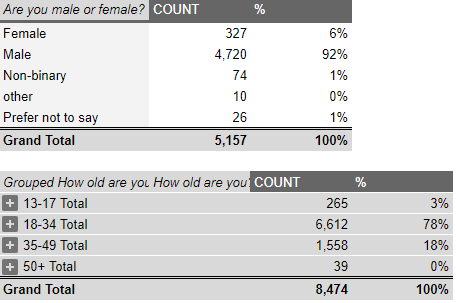
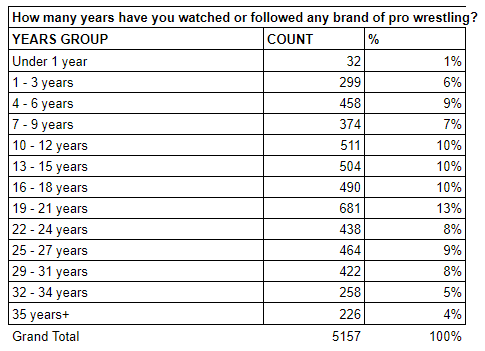
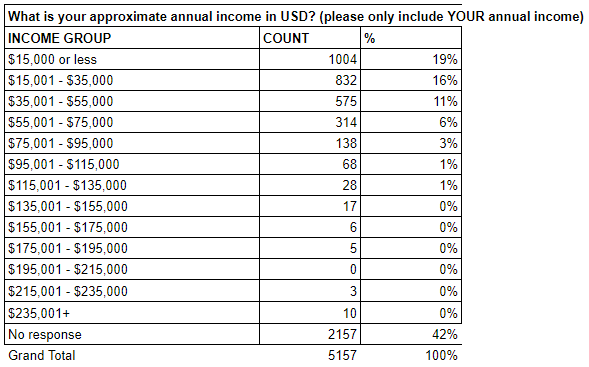
2020 demographics
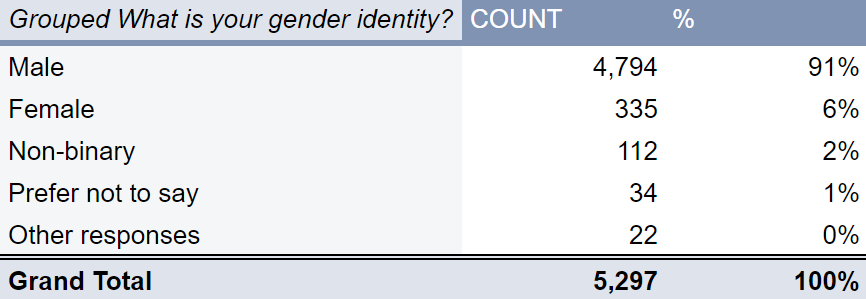

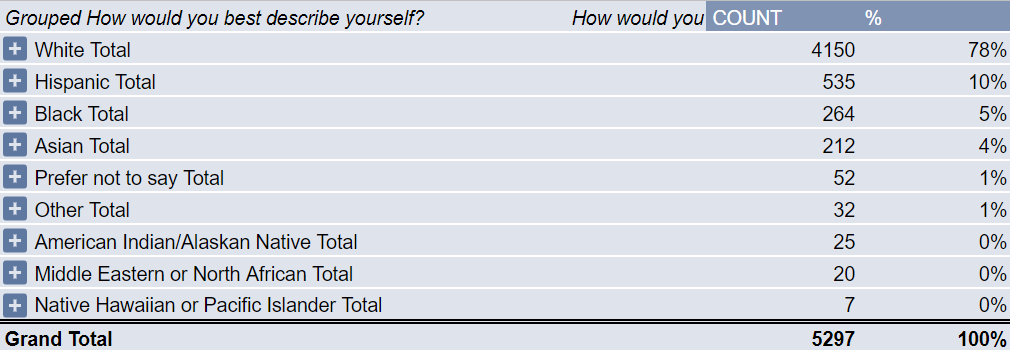
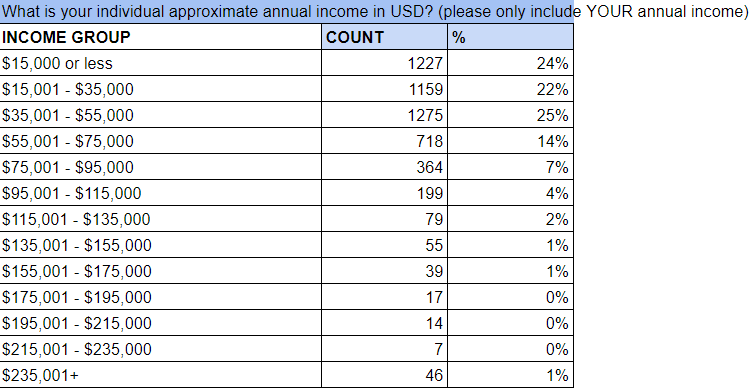
Country demographics: 2019
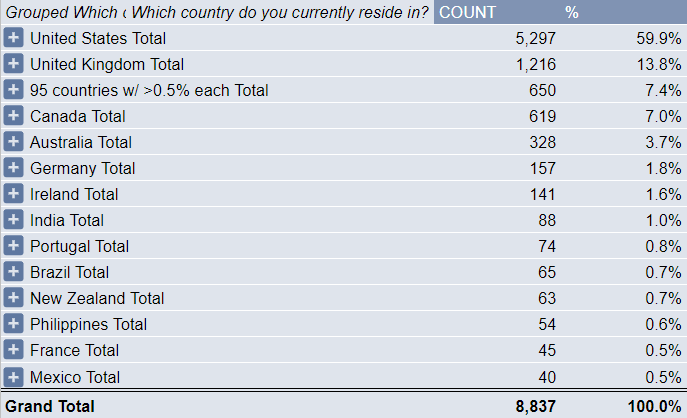
Country demographics: 2020
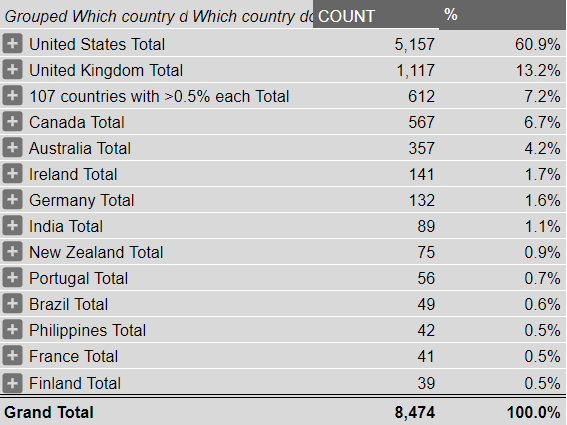
Never miss a post. Sign up below to get new Wrestlenomics blog posts sent automatically to your email as soon as they’re posted.

You must be logged in to post a comment.